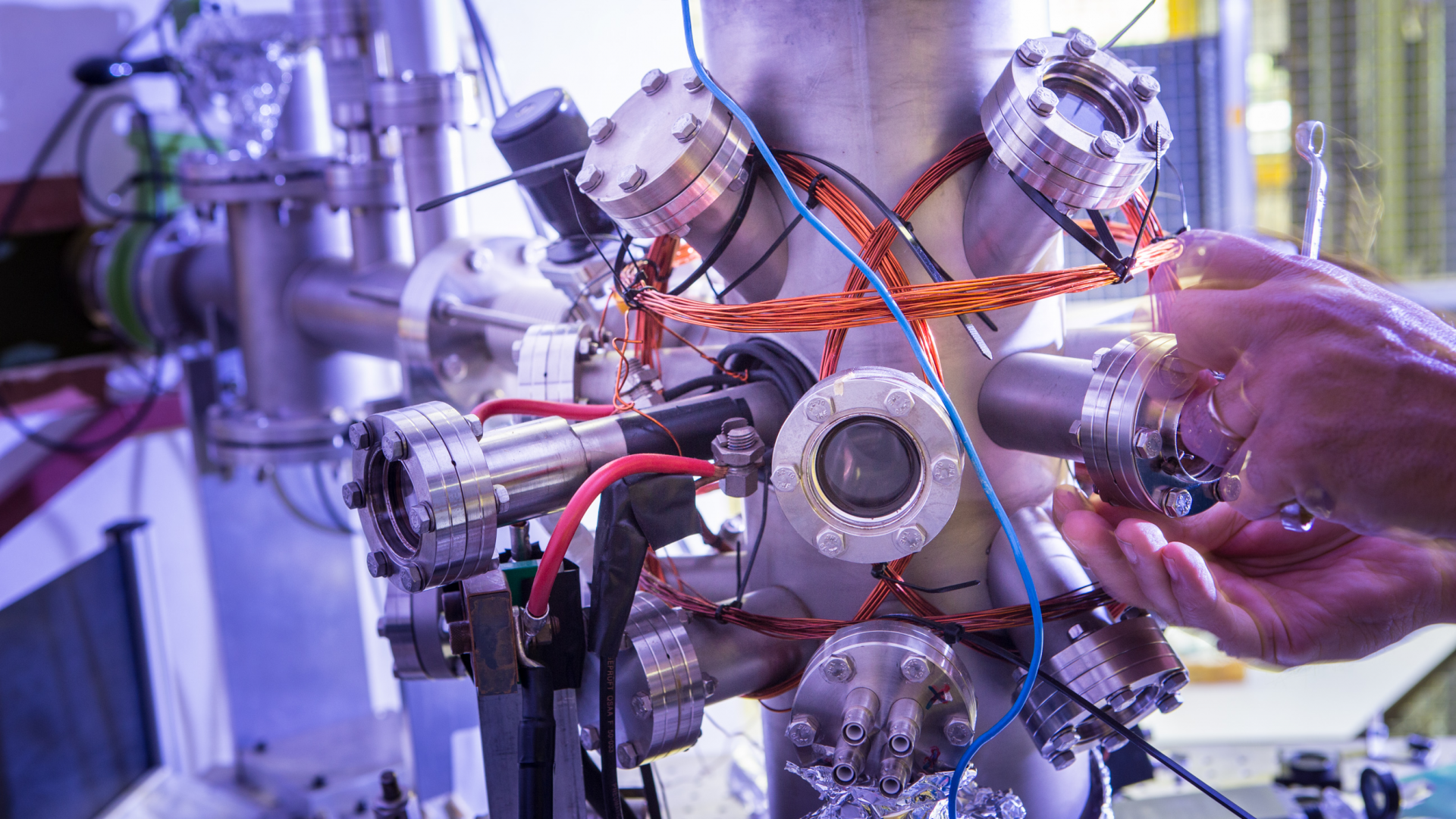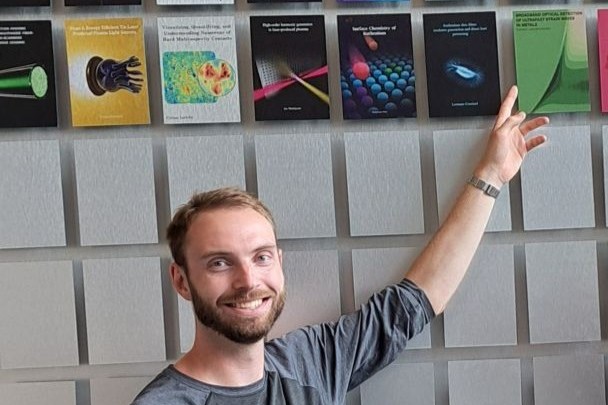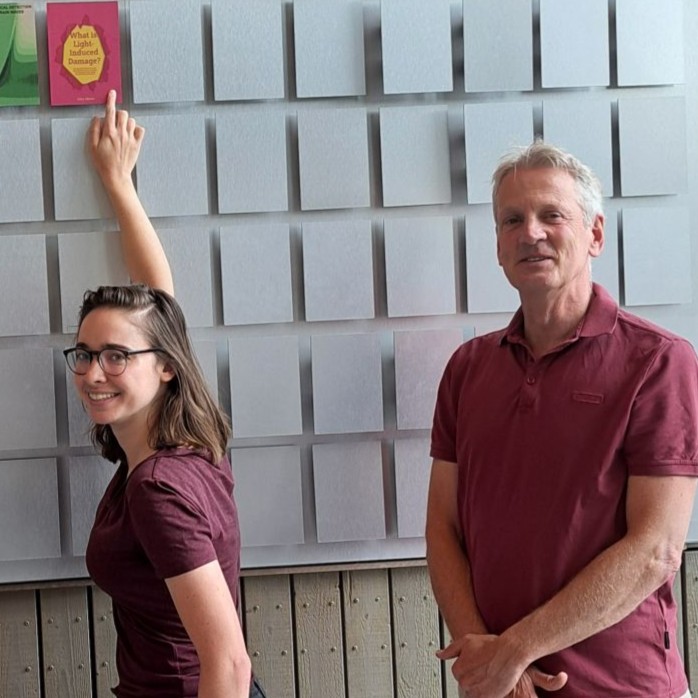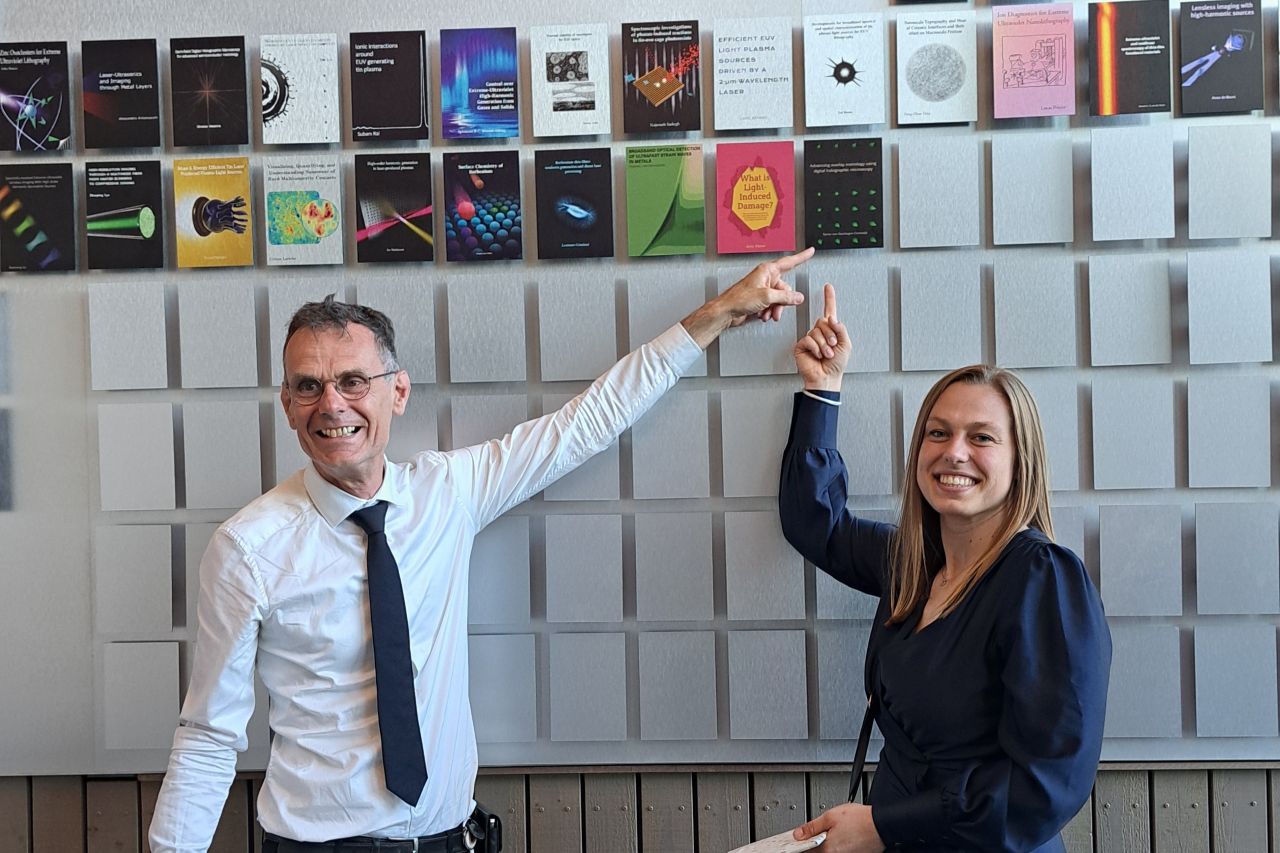Six new doctorate degrees in time for summer holidays
Jan Mathijssen, ‘High-order harmonic generation in laser-produced plasmas’
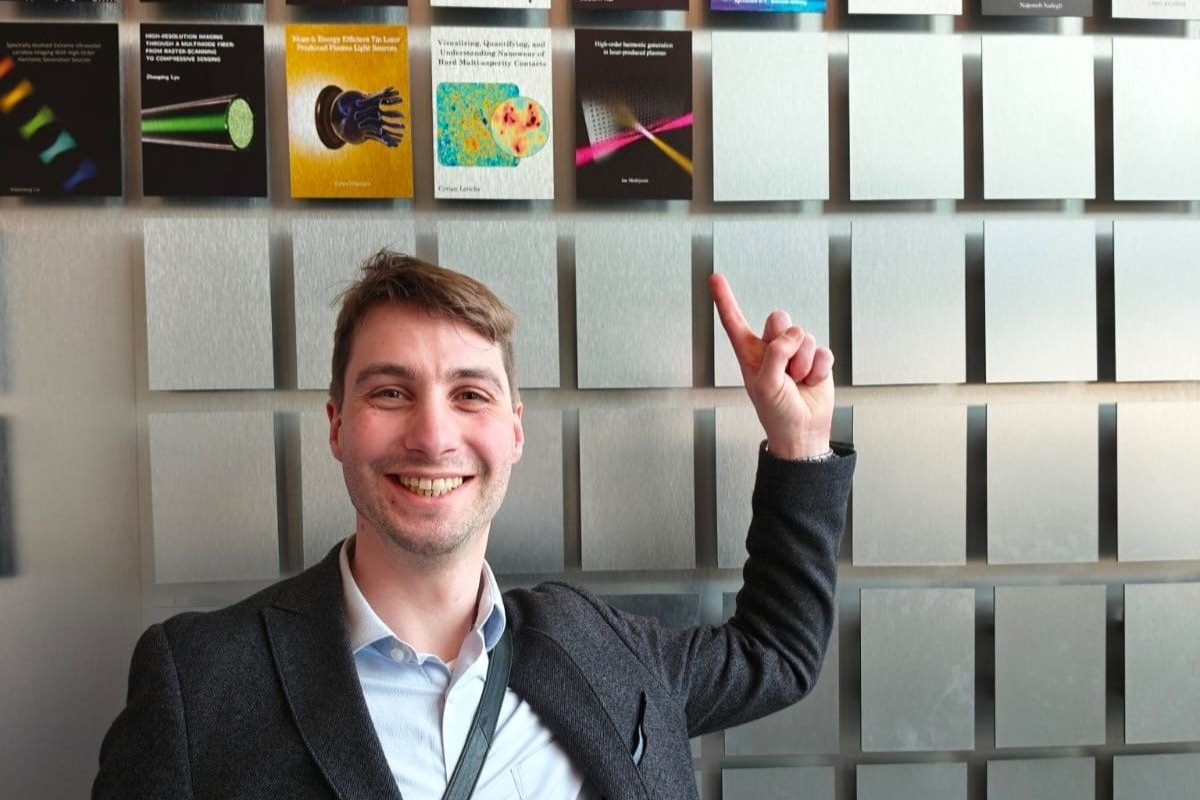
Jan now works in R&D at Newson NV in Belgium, focusing on the development of laser deflection systems. He aspires to further combine scientific research with industrial application, ideally in a setting that offers room for both exploration and impact.
Stefan van Vliet, ‘Surface chemistry of ruthenium’
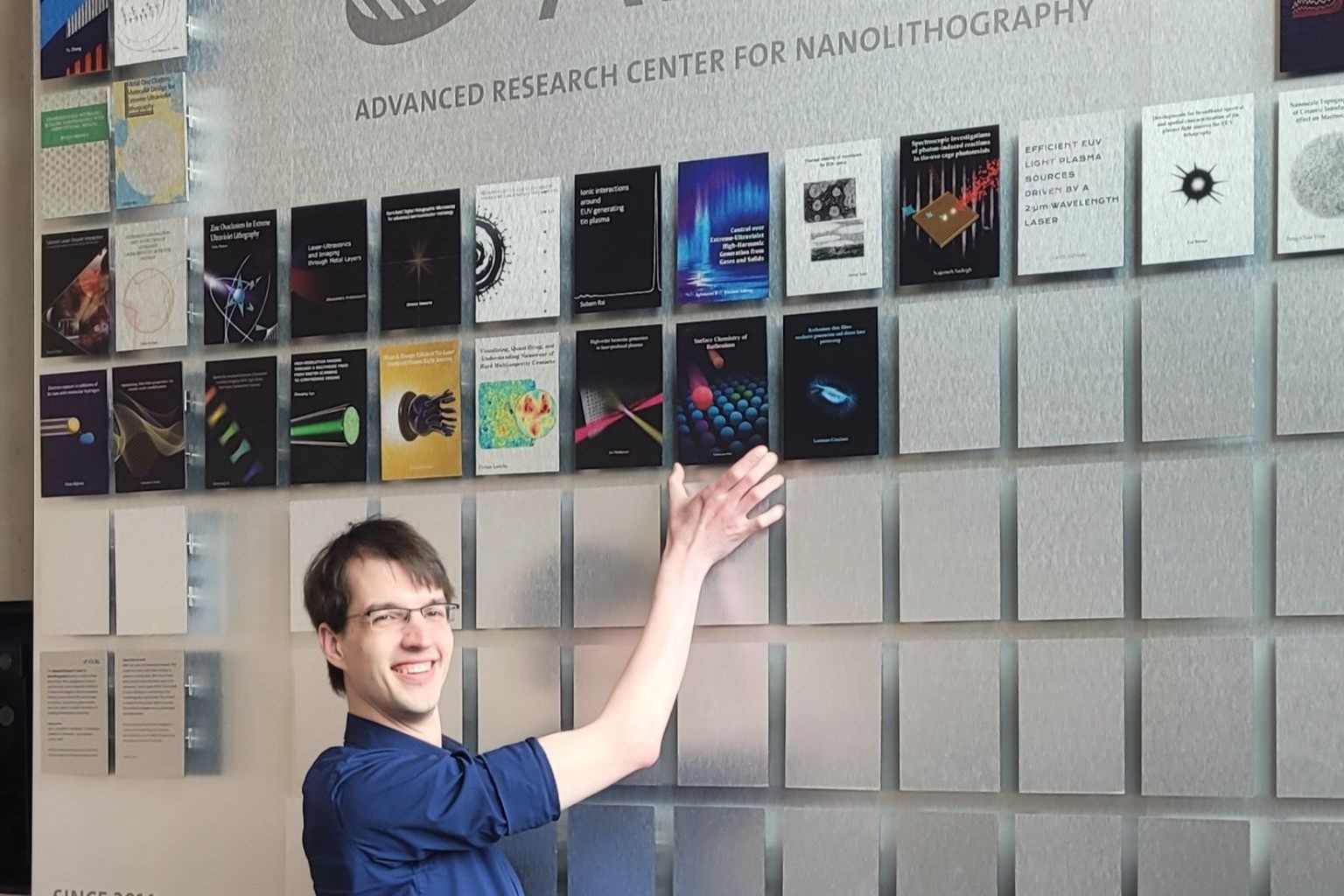
Stefan earned his doctorate on April 30, joining the Wall on May 7. His thesis explores how the element ruthenium (Ru) changes in chemical reactions. In particular, his research revealed new insights into the individual steps of Ru oxidation, and how quickly this process occurs.
Stefan compares the value of this knowledge to keeping your keys from rusting: “Oxidation is a degradation process, and if you go too far, things break down. If you know how something breaks, you can prevent that from happening.” Understanding how Ru breaks down informs extreme ultraviolet (EUV) research and industry, with applications to microelectronic devices with Ru surfaces.
Stefan is now a postdoctoral researcher at the University of Twente, continuing his journey in extreme ultraviolet research with the XUV Optics Group. He really enjoys getting to work at the intersection of industry and academia, learning from both sides and finding applications for fundamental research.
Lorenzo Cruciani, ‘Ruthenium thin films: terahertz generation and direct laser patterning’
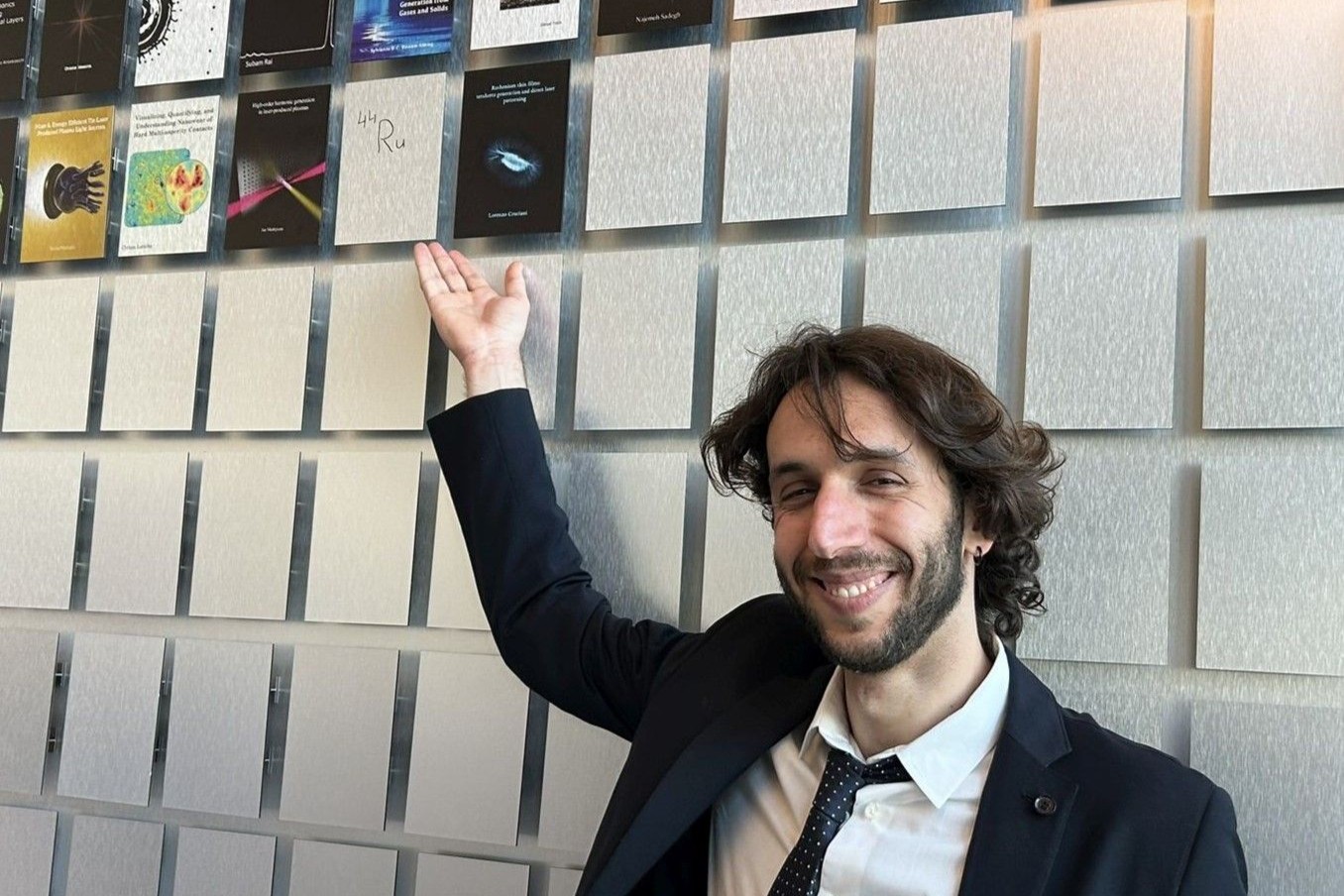
On May 1, Lorenzo celebrated his PhD defense and Theses Wall ceremony. Lorenzo’s research focused on ruthenium, a metal that could play an important role in future computer chip production. He showed that when ultra-thin layers of ruthenium are hit with extremely short laser pulses, they emit terahertz radiation – a special type of light used to study materials. He discovered that the strength of this emission depends on how much the metal has oxidized.
Using this effect, he developed a new way to create tiny electrical patterns on the metal’s surface by carefully controlling laser exposure. Impressively, he managed to make structures smaller than what was thought possible with the type of laser used.
Lorenzo now works in R&D at a company developing microscopes for biological and medical applications – a field where we’re sure his creativity and curiosity will continue to shine.
Thomas van den Hooven, ‘Broadband Optical Detection of Ultrafast Strain Waves in Metals’
Thomas earned his doctorate on June 16, and celebrated with fellow group member Ester at the Theses Wall ceremony on June 25. He studied how sound waves can alter the structure of a metal. He measured the effects by looking at how light reflects off the metal differently when sound is traveling through it.
What he found most interesting was that this measurement depended a lot on the color of the light, revealing limitations of the use of certain colors in most measurements!
Thomas is hoping to move abroad for the next step in his research career.
Ester Abram, ‘What is Light-Induced Damage? Pre-ablation regime optical and morphological changes in nanometer thick films and grating structures’
Ester earned her PhD on June 20, and celebrated with fellow group member Thomas at the Theses Wall ceremony on June 25. Ester investigated how intense laser light can damage metal surfaces.
Most notably, she saw that just before the surface was damaged, its structure would change just enough to reflect light differently. This effect can serve as a warning signal to help computer chip manufacturers prevent severe damage before it occurs.
Ester is now a postdoc in Imran Avci’s group at Vrije Universiteit Amsterdam, taking on a new research challenge.
Tamar Cromwijk, ‘Advancing overlay metrology using digital holographic microscopy’
Tamar completed her PhD on July 3, and celebrated the same day by adding her cover to the Theses Wall. Tamar’s research focuses on an imaging technique called digital holographic microscopy (DHM).
In her thesis, Tamar explores the challenges of this technique for its application to computer chip manufacturing. Specifically, she investigates the potential of DHM as a tool for overlay metrology: a precise measurement of the alignment between two layers of a chip. For her exemplary work, Tamar received the distinction cum laude!
Tamar now works as a researcher at ASML, exploring novel metrology techniques for applications in the semiconductor industry.

